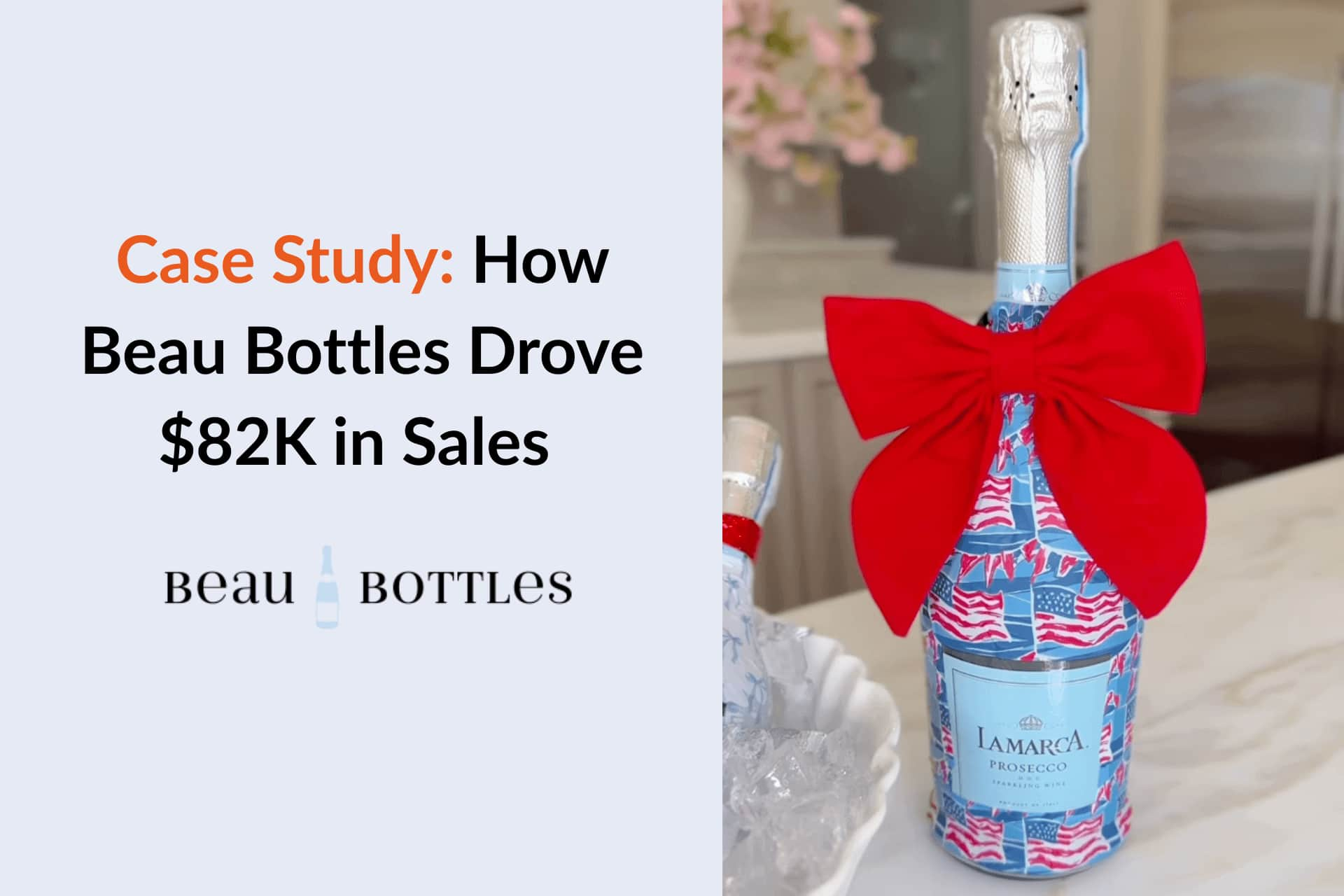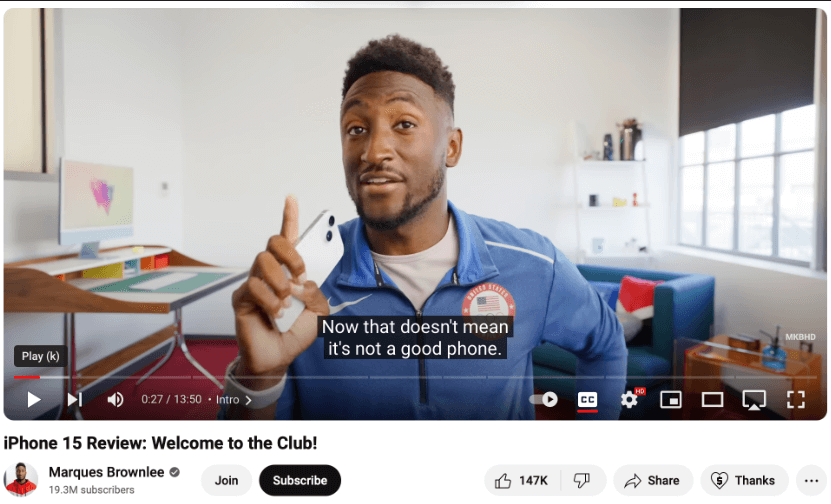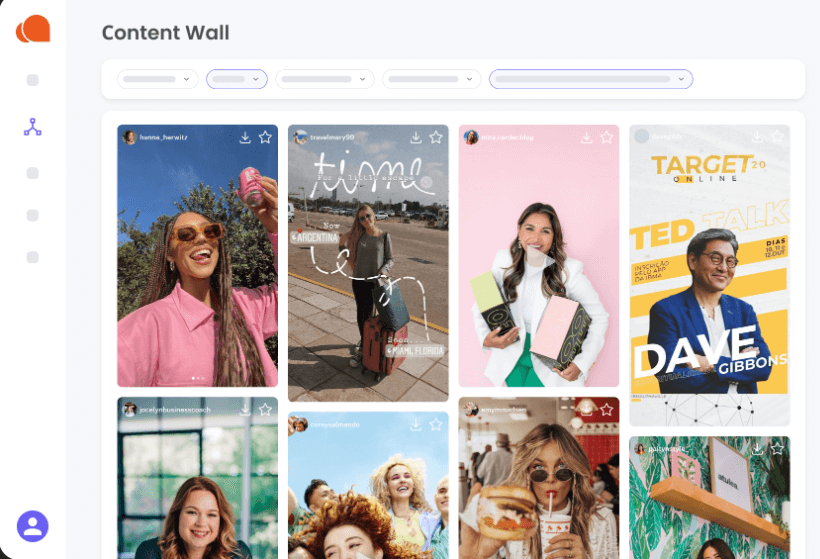





With global influencer marketing 3 times bigger than in 2019, it’s safe to say that this strategy has proven effective in driving brand awareness, engagement, and sales. On average, brands earn $5.78 for every dollar invested in influencer marketing, with some seeing returns as high as $20 per $1 spent.
However, despite this growth, nearly 30% of marketers still don’t track ROI, missing out on valuable insights that could significantly enhance their campaign effectiveness. Measuring ROI in influencer marketing goes beyond just tracking financial returns—it involves a comprehensive analysis of metrics like engagement rates, conversion tracking, and overall brand impact to fully understand the value of your investment.
This guide will walk you through the best practices for measuring and maximizing Influencer Marketing ROI, helping you make data-driven decisions and achieve the highest possible return on your investment.
Watch this video to learn how to track and improve your Influencer Marketing ROI.
Influencer marketing ROI (Return on Investment) is a metric that evaluates the profitability and effectiveness of influencer marketing campaigns by comparing the revenue generated to the costs incurred.
However, revenue in influencer marketing is not only indicated by cash flow generated by codes or links but by different performance indicators, such as increased brand awareness, engagement and sales, that allow brands to have a comprehensive view of a campaign’s success and value.
In the context of influencer marketing, conversions refer to the specific actions that consumers take after engaging with an influencer’s content. This could be from purchasing a product or signing up for a newsletter to downloading an app or any other measurable action that aligns with the campaign’s goals.
Measuring conversion helps you asses how effective are your influencer partnerships in driving tangible business outcomes, ensuring that their marketing efforts lead to meaningful and profitable consumer behavior.
To measure ROI and track the success of influencer campaigns, it’s essential to focus on the main KPIs for influencer marketing, including number of impressions, cost per mille (CPM), click-through rate (CTR), sales, and follower growth.
Let’s explore the different categories used to measure influencer marketing ROI.
At the end of the day, all marketing activities come down to one thing: sales. As this is the metric that impacts your business most, let’s start with the bottom-of-the-funnel ROI metric. Here’s how you can measure influencer conversions:
Affiliate links are a powerful method for tracking clicks and conversions. For optimal results, create custom links for each influencer to accurately monitor the number of clicks they generate and the resulting conversions.
Typically, affiliate links place a cookie in a prospective customer's browser, allowing the conversion to be tracked even if the order is placed at a later stage. This enables precise measurement of each influencer's impact, facilitating better ROI analysis.
Custom voucher codes are another effective method for tracking conversions. Ideally, share a unique voucher code with each influencer, enabling you to attribute each conversion directly to the corresponding influencer.
This approach allows for precise measurement of each influencer's contribution, enhancing your ability to assess the effectiveness of your influencer marketing efforts.
When measuring conversions, it is important for a marketer to analyze different influencer marketing KPIs. Some important KPIs to analyze when measuring influencer marketing ROI are:
What is important to understand when using these technologies is that, as with all things digital marketing, attribution is never 100%. Based on various international expansion campaigns we managed for clients where we set up a brand new Shopify store and the only channel active was influencer marketing (using affiliate links & discount codes), we know that:
Keep in mind that the average attribution rate is around 70%.
This means that around 30% of the conversions are not being attributed to your influencer marketing program.
Tip: As a general rule, you could simply divide your attributed sales by 70% to get the actual number of sales generated by your influencer program. Or you can use tools like Influencer Hero, Grin, and Upfluence to track conversions and clicks.
Brand awareness refers to the extent to which consumers recognize and recall a brand, its products, or services through the endorsements and content shared by influencers.
Leveraging influencers with a strong, engaged following can amplify a brand’s visibility and credibility, creating a lasting impression on potential customers and driving higher engagement and recall rates beyond traditional advertising methods.
These are the KPIs you should measure for brand awareness:
Engagements have a more tangible impact on ROI. This is considered a middle-of-the-funnel KPI because people took tangible actions to interact with your brand in some form or another.
Below are some of the KPIs you should measure for engagements:
One of the things that is often difficult to quantify when working with influencers is the value of the content they create. The most successful brands reuse the content on multiple levels. Below are some examples of how influencer content / UGC can be reused:
Content reuse strategies can vary significantly depending on the industry:

Fashion Industry: Focus on visual content like Instagram posts and stories. Collaborate with fashion influencers known for their style and large following, using high-quality photos and videos to showcase outfits and trends. In this context, details matter—if an influencer overlooks simple aspects like cleaning up photos or ensuring the best resolution, they might not be the best choice.

Tech Industry: Partner with tech bloggers and YouTube reviewers to provide in-depth reviews and tutorials. Highlight product specifications, features, and benefits through detailed blog posts and video content.

Fitness Industry: Work with fitness trainers and health influencers to create workout videos, nutrition tips, and product endorsements. Utilize platforms like YouTube and TikTok for engaging, short-form content.
One effective method brands are using to increase their effectiveness for their paid social media is influencer whitelisting. In this technique, brands run the ads through the influencer’s account, leading to more authentic advertising. Read our full article on how to partner with influencers for whitelisting here.

Influencer marketing platforms like Influencer Hero automatically capture all influencer content which you can easily download through a content library to be reused.
According to a recent report by Influencer Marketing Hub, the average ROI for influencer marketing in 2024 is $5.20 for every dollar spent on influencer marketing.
And, in the case of higher performers, businesses can earn up to $20 or more for every dollar spent.
To measure influencer marketing ROI, you first need to figure out how much you invested and how much revenue your campaign has generated.
Once you have that information, the formula to calculate ROI is: (Revenue/Cost) x 100

Now that you know how to effectively measure influencer marketing ROI, let's get to the solution to maximize your influencer marketing ROI.
First off, the foundation of any successful influencer marketing campaign lies in aligning brand objectives with influencer goals.
Before diving into partnerships, it’s crucial for D2C brands and marketers to define clear and measurable objectives, whether it's increasing brand visibility, driving website traffic, or boosting sales. Consequently, by establishing shared goals with influencers, brands can ensure that the campaigns are strategically aligned, leading to higher ROI.
Once your campaign objective has been clearly defined, the next step is to find the right influencers to partner with. Whether we like it or not, one size does not fit all when it comes to influencer marketing. This is why D2C brands should prioritize audience relevance over reach when selecting influencers for collaborations.
Instead of focusing solely on follower count, the best option is to delve deeper into influencer demographics, engagement metrics, and audience interests to ensure efficient alignment with your target audience. By partnering with influencers who resonate with your brand's target demographic, you can drive higher engagement and conversions, ultimately leading to increased ROI.

Take Gymshark as an example. Rather than partnering with influencers just because of their followers, they target those who align with the brand’s values and active lifestyle. Gymshark works with fitness influencers who promote the brand through workout videos and social media appearances.
In an age of ad fatigue, authenticity reigns supreme in influencer marketing. That is why D2C brands must prioritize genuine endorsements and authentic storytelling instead of overtly promotional content.
Consumers crave authenticity and are more likely to engage with content that feels genuine and relatable. So, by choosing to partner with influencers who authentically align with their brand values, D2C brands can build trust, credibility, and loyalty, eventually driving higher ROI.
Glossier, a beauty brand known for its minimalist and user-centric approach, exemplifies this strategy through its use of user-generated content (UGC) and authentic influencer partnerships.

They focus on leveraging everyday customers and micro-influencers who genuinely love their products. The company focuses on real, unfiltered content that showcases how Glossier products fit into the daily lives of its users.
Once you have identified the right influencers, you will still need to go through the process of identifying your performing influencers. Let's take a step back and understand the following.
Your influencer marketing ROI consists of two parts:
This means that there are two ways to maximize influencer marketing ROI.
For this is key to understand the underlying metrics when it comes to influencer marketing.
To understand how to maximize your influencer marketing ROI, it is important to know the unit economics and performance distribution of influencer marketing.
We frequently refer to the 80/20 principle when talking about the performance of influencer marketing.
While influencers can sell a lot of products, it doesn’t always work that way. Surprisingly, in some cases, micro influencers with fewer followers can achieve higher conversion rates than macro influencers. This is why before establishing a partnership, we always advise going through the process of testing influencers to identify which ones perform well.
The problem and the reason why a lot of brands fail is because they don’t understand the strong power law distribution involved in influencer marketing.

The 80/20 principle often becomes more profound where typically around 5-10% of the influencers you work with generate over 80% of your revenue.

Based on this principle let's take a look at the two components which we can influence to improve influencer marketing ROI.
Based on the performance distribution outlined above you can lose money quite fast if you start to offer fixed payments to all the influencers you work with. This is why we recommend in the earlier stages to start with affiliate & gifting campaigns where you “test influencers”.
Note: it is important to note that this is for performance-driven influencer marketing campaigns only. If your main objective is to create high-quality content that you can re-use, this strategy is less suitable.
We typically break down your influencer program into 2 central elements.
In essence, what you are trying to do is keep your cost low when identifying high-performing influencers. As explained earlier, you ideally want to use an affiliate link and personalized voucher so you can track the performance. By offering a free product and an affiliate % you can reduce costs which will have a positive impact on your ROI.
The second element would be relationship building. Once you identify your performing influencers, welcome them to your brand ambassador program and make sure to invest in these relationships. These are the influencers who will carry the overall performance of your influencer program. You can access our detailed article explaining the two most important elements of an effective influencer marketing program here.
To maximize your influencer marketing ROI, organize seasonality campaigns with your performing influencers. A seasonality campaign is simply a special promotion during the retail calendar. Influencers can be an effective way to announce your promotion, and now that there is a “reason to buy,” this can lead to enhanced conversions.
At the end of the day, it all comes down to persuasive communication. When working with influencers, effective negotiation is key. Make sure to always negotiate based on data which is why measuring your influencer marketing ROI is so important.
By using affiliate links and discount codes, you can allocate budgets based on past performance, and you know what budgets you can allocate to be profitable. Convincing influencers to work with you with limited resources means that you need to be persuasive in your negotiation.
We outline this process step by step through this influencer workflow chart and our influencer communication templates which you can access completely for free.
In order to fully maximize the value you get out of influencer marketing, make sure to reuse the content created by the influencers. As mentioned previously, some of the ways to reuse the content is:
You ideally want to reuse the content as much as possible, as UGC serves as social proof, validating your brand's value proposition and fostering trust among consumers. By leveraging UGC in marketing campaigns, brands can amplify their reach, drive engagement, and ultimately achieve higher ROI.
Doritos is great at doing this, as the brand shares unique and exotic recipes that different creators and users make using their products.

Additionally, Doritos launched Doritos Legion of Creators, a site where users can create branded images and videos that the brand shares on its social media accounts.
If you want to streamline your influencer marketing campaign analysis, the best way to do so is with the right tools. Here are 3 of the best tools that will help you effectively measure your ROI as well as understand how to improve your campaigns.

Influencer Hero is perfect for brands looking to simplify the influencer marketing process with a focus on maximizing efficiency and achieving high returns on investment. Being an all-in-one influencer marketing platform, you can find, reach out and collaborate with influencers while managing the entire process seamlessly.
Key features:
Interested in learning more about how the platform works? Book a demo.

Traackr is ideal for brands looking to build and manage long-term influencer relationships while having robust analytics to measure success. It helps brands discover, vet, and manage influencer relationships while tracking campaign effectiveness.
Key Features:

GRIN is ideal for brands seeking a complete solution to manage every aspect of their influencer marketing campaigns efficiently and effectively. It offers robust tools for discovering influencers, managing relationships, and analyzing campaign performance.
Key Features:
Access our top 10 influencer marketing platform comparison article here.
Influencer marketing offers significant growth potential and impressive ROI, but success requires the right strategies and measurement. By effectively tracking key metrics such as conversions, brand awareness, and engagement, brands can optimize their strategies for greater impact.
Utilizing affiliate links, personalized voucher codes, and influencer marketing platforms streamlines the measurement process and enhances accuracy. Furthermore, maintaining a balance between marketing impact and costs, and focusing on building relationships with high-performing influencers, are crucial for maximizing ROI.
Embracing these best practices can propel your influencer marketing campaigns to new heights, ensuring long-term success and profitability.

Influencer marketing ROI, or return on investment, measures the financial return generated from a campaign involving influencers relative to the cost incurred. It includes metrics such as increased sales, enhanced brand awareness, and improved social media engagement. By calculating influencer marketing ROI, businesses can evaluate the effectiveness and profitability of their influencer collaborations.
ROI in influencer marketing is calculated by dividing the revenue gained from the influencer campaign by the total investment in the campaign. The formula is: ROI = Revenue generated / marketing cost.
Measuring influencer marketing ROI is crucial because it helps businesses determine the effectiveness and efficiency of their marketing investments. Accurate ROI measurement ensures that marketing budgets are allocated wisely, identifies the highest-performing influencers, helps refine future strategies, and justifies the expenditure on influencer marketing to stakeholders.
Several metrics are used to measure influencer marketing ROI, including:
Best practices to maximize influencer marketing ROI include:



Schedule a Demo with one of our media experts below.